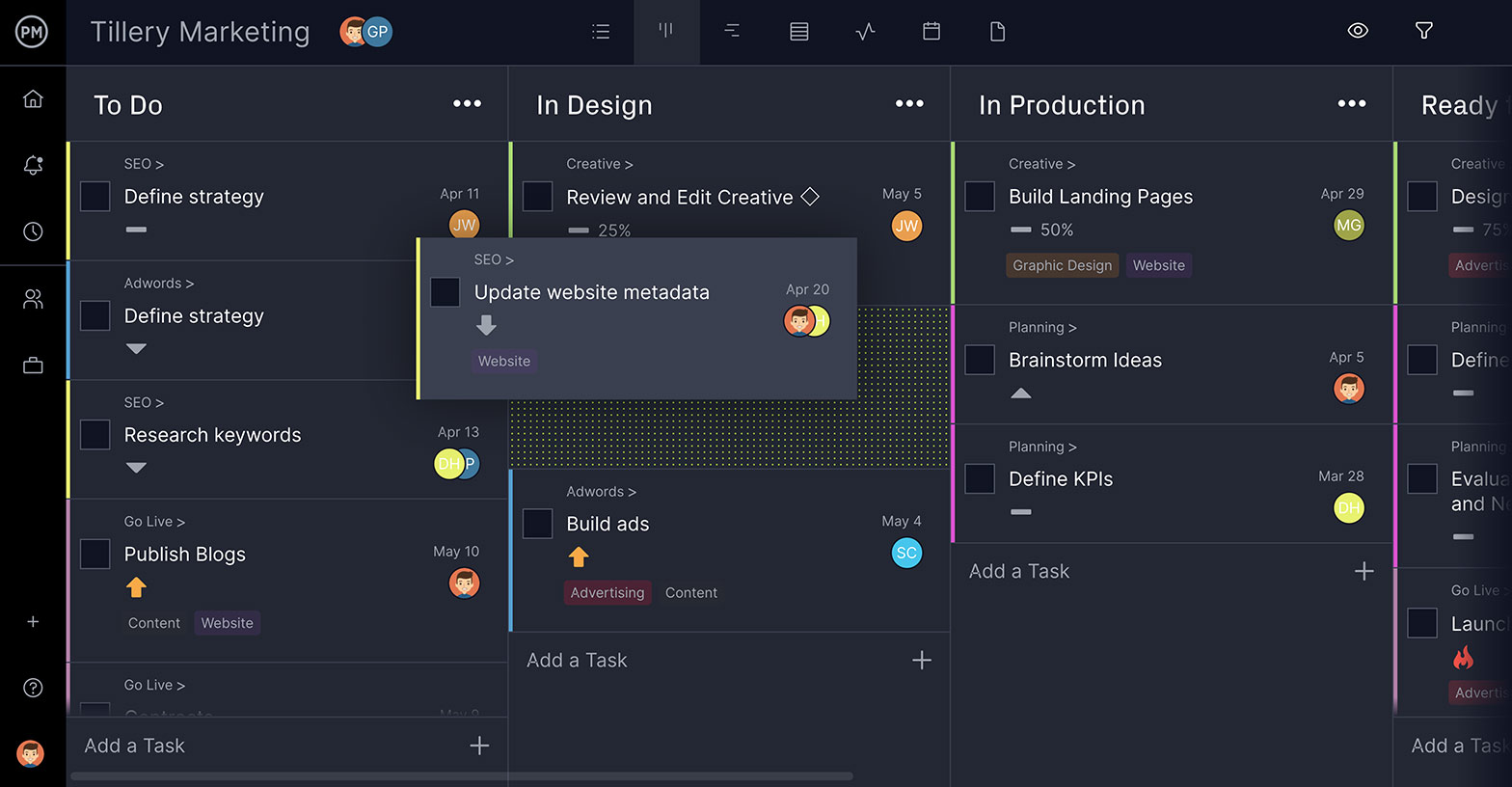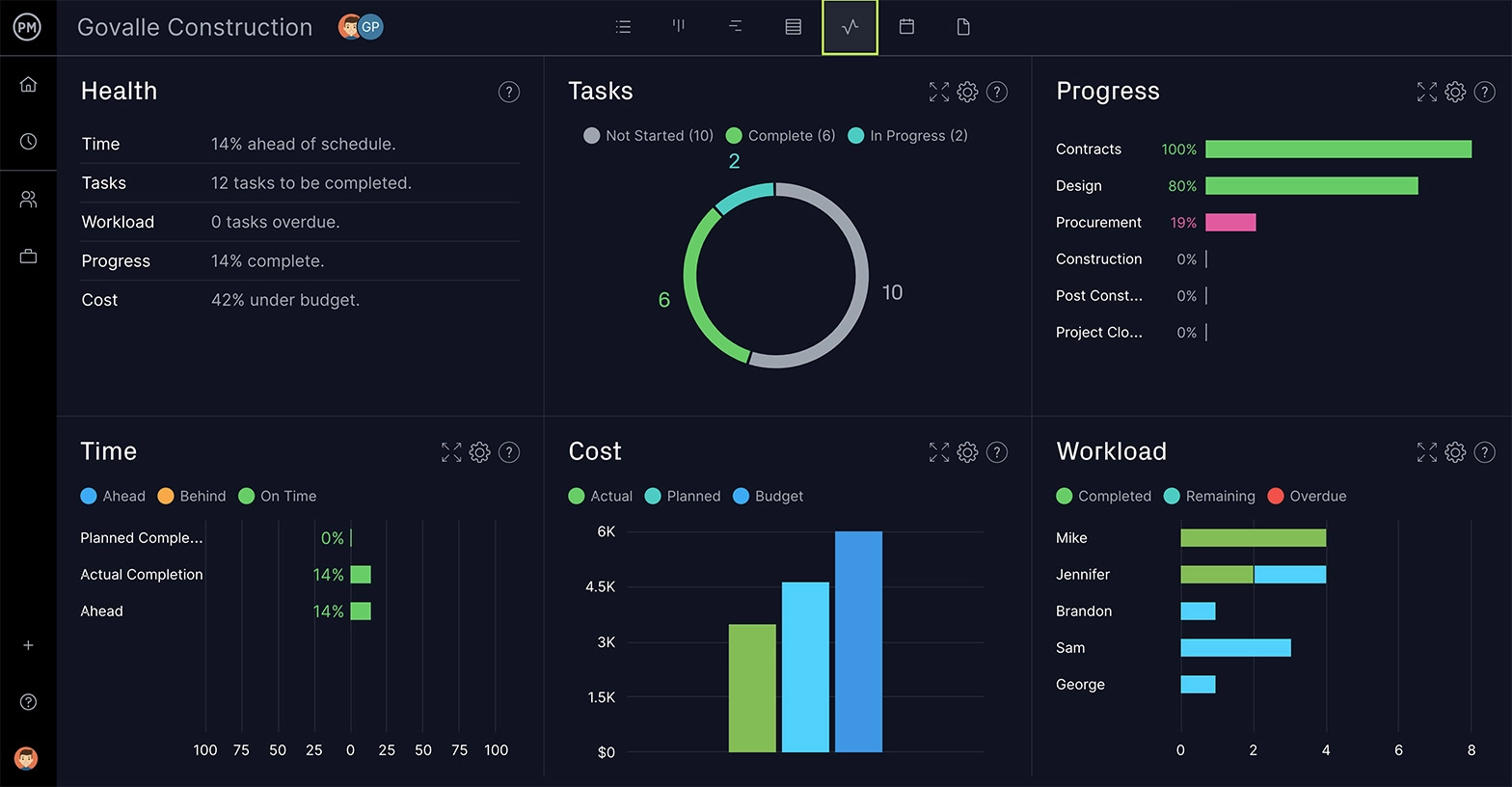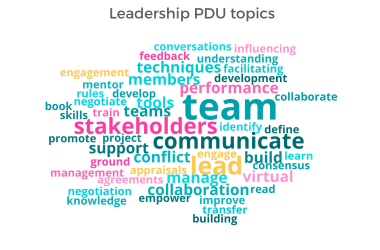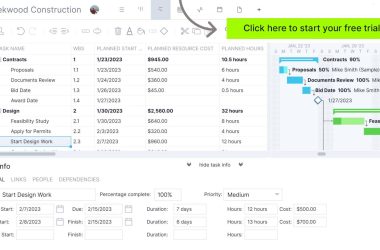Similar to a journey, projects have a beginning and an end. Just like a trip, most projects wouldn’t set off without first having an itinerary. In project management, the equivalent of an itinerary is a creative brief.
But not all projects use a creative brief; they’re found only in specific disciplines. When we define the term, we’ll explore which projects use one. Then we’ll break down the creative brief into its essential parts and show you how to write one to deliver project success.
What Is a Creative Brief?
A creative brief is a short document that’s used in marketing, advertising and design projects. It outlines the project’s mission, goals and challenges. But it goes further, defining the demographics, messaging and other important aspects of the project.
The author of a creative brief is usually the creative project manager, but in many cases, an outside consultant is hired to do the job. Whoever is responsible for making the creative brief, the end result is the same: stakeholder alignment.
A creative brief is just that, a brief, and often projects are initiated without a full creative brief. But starting a project with no creative brief is a mistake. Marketing campaigns are often complicated, with volumes of collateral and many fronts. A creative brief helps you deliver the campaign more effectively and efficiently.
The creative brief is the outline of what will become the project plan. ProjectManager is online project management software that can help you turn your creative brief into a working project plan. Use our interactive Gantt charts to organize your activities, link dependencies to avoid delays and even filter for the critical path to see what’s essential. Then you can set a baseline to track project variance in real time and stay on schedule. Get started with ProjectManage today for free.

Key Components of a Creative Brief
A creative brief outlines the strategy of the project. To do this, it’s broken up into sections to help you describe the project thoroughly and have a well-thought-out idea of what you’ll be doing without getting bogged down by the details.
As noted, the creative brief gets buy-in from stakeholders, but it’s also a means of communicating what the project is to the creative team, agency or designers that’ll be executing the project. Here are the key components of a creative brief.
Add Company Description
First, explain what your company is and offer some background for those who’ll be working with you to execute the project. Briefly show what you do and the services or products you offer. You can include a link to your website or other materials that can further flesh out your company.
Explain the Project
Next, you need to summarize the project, such as explaining what it is and why it’s needed. This provides context that’s always helpful whether you’re building a website or refreshing your social media presence.
List the Objectives
The project objectives are key to delivering success. No project should begin until the strategy and objectives have been well thought out. This section should answer why you’re doing the project, what its goals are and whether there’s a problem that you’re trying to solve or a niche you want to exploit. You’ll also want to detail the metrics you’ll use to measure success.
Define the Target Audience
You need to know who you’re selling your product or service to in order to connect with them. This involves research, demographic information and behavioral insights that show who the campaign is directed towards.
List Deliverables
Every project has deliverables. List all the deliverables in your project, but especially the final deliverable, whether it’s an eBook, web ad, logo, etc. Detail those deliverables, such as format, size, amount, etc.
Note Your Competition
Most likely, you’re not the only fish in the sea. If you don’t want to be eaten by your competition, you better have a clear picture of who your competitors are. This includes understanding the marketplace, trends and anything else that might impact the success of your project. Look at how you compare and contrast to the competition to differentiate yourself.
Detail Your Message
You might not have an idea of what that message will be at this point, but you should understand the tone and style that’ll be the most effective. Whatever style and tone you choose, make sure it’s consistent across your marketing efforts. The messaging must align with your objectives and strategy in order to attract the customers you want.
Include a Timeline
Projects are delivered over a specific period. If you know the schedule, you’ll want to include the timing of your marketing campaign in the creative brief. This doesn’t have to be as detailed as your plan, but even having a deadline helps the creative team, and stakeholders will want to know this information as well.
Related: Free Project Timeline Template for Excel
Show Your Budget
The budget might already be set for the project. Either way, it should be addressed in the creative brief. You’ll want to meet with your designer to make sure that the budget aligns with the projected project costs. The budget should be agreed upon and meet realistic expectations.
Record Stakeholders
All key stakeholders and their contact information should be included. It’s helpful if you define each stakeholder’s impact on the project. Then you’ll want to include how and when they want project updates.
Types of Creative Briefs
While creative briefs are mostly used in marketing, advertising and design projects, there are a few types of creative briefs. The three most common types of creative briefs are projects, business objectives and value propositions.
There are indeed such briefs that focus on one of these topics, but more often you’ll find creative briefs that follow the format we described above. These are creative briefs that incorporate all three types of creative briefs in one document.
How to Write a Creative Brief in 11 Steps
Now that you understand what a creative brief is and the parts that make it up, let’s take a look at how to make one. Writing a creative brief isn’t hard, but compiling the data takes time. Consider that before you start. When you’re ready, here are the steps to take for a complete creative brief.
1. Name the Project
First, name the project. It introduces your team to the product or service you’re marketing. The creative team must understand that message inside and out, and the project name is the initial step to accomplishing that goal.
2. Share Your Brand and Provide Background
Whether you’re developing the marketing campaign in-house or contracting it out, having a clear picture of the company, its history and its brand goes a long way in executing the marketing plan. A few sentences about the development of the company and its brand help sharpen the final delivery.
3. Detail the Project Objective
Now, let’s get more specific. Briefly explain the why of the project and its purpose. This includes the timeline, such as deadlines, and the audience you’ll be targeting. Again, you don’t want to be verbose. Keep it short and simple so everyone knows the project’s expectations.
4. Describe the Target Audience
Now you want to really describe the market segment you’re targeting. There’ll be more details in this section, such as simple demographics, buying behaviors, trends and other customer histories to understand the customer’s motivation and psychographics, which discern how the audience thinks and feels. Finally, geographics help your target markets and determine the pricing in each.
5. Know the Competition
Who else is vying for the same customers with similar products? You must know who you’ll be competing against to differentiate yourself. List the competitors and outline your commonalities and how you differ.
6. Create the Key Message
The key message needs stakeholder buy-in so it requires a bit of finesse. As you craft one, be sure to include the pain points of your customers and touch on their experience, then note how your product or service resolves those issues and enhances their experience. Remember, this must be a customer-centric message to succeed.
7. Note the Key Customer Benefit
You addressed pain points previously, now what features are going to benefit your target audience? If you try to deliver a message on many features, though, you’ll dilute your message and most likely not hook the target audience. It’s best to discern the key customer benefit and focus on that. That’ll always be the best feature.
8. Choose the Right Tone
It’s important that your marketing or advertising understands its audience because that informs the tone and voice used when speaking to them. If they’re young that will demand a certain attitude, while older audiences will need a different one. Identify the right attitude and make sure you’re consistent in your voice throughout the marketing campaign.
9. Know the Right Call to Action
You’re not just trying to get the audience’s attention, you want them to have a call to action (CTA). That’s a link they’ll click or even something as difficult to measure as a change in perception about your brand, product or service. The CTA should drive the project’s objective.
10. Have a Distribution Plan
All the work you’ve put into the right message and assets will go to waste if you don’t have a method of getting it to your target audience. Note the channels or platforms on which you’ll be announcing or advertising your product or service. That can be billboards or newspapers or social media, depending on the demographic research you did above.
11. Get Approval From Stakeholders
You’re not done with the creative brief until you get stakeholder buy-in. You’ll also need to share it with the creative team as they’re responsible for executing the plan. The approved creative brief puts everyone on the same page, which is essential to delivering a successful project.
Free Creative Brief Template
That’s a lot to take into consideration. To make the process easier, use our free creative brief template for Word. It’s laid out for you and can be printed as many times as needed. Our free creative brief template not only streamlines the process but creates consistency for your creative briefs throughout projects to help when you’re researching historic data. ProjectManager has dozens of free downloadable project management templates for Excel and Word that help you through every phase of a project.
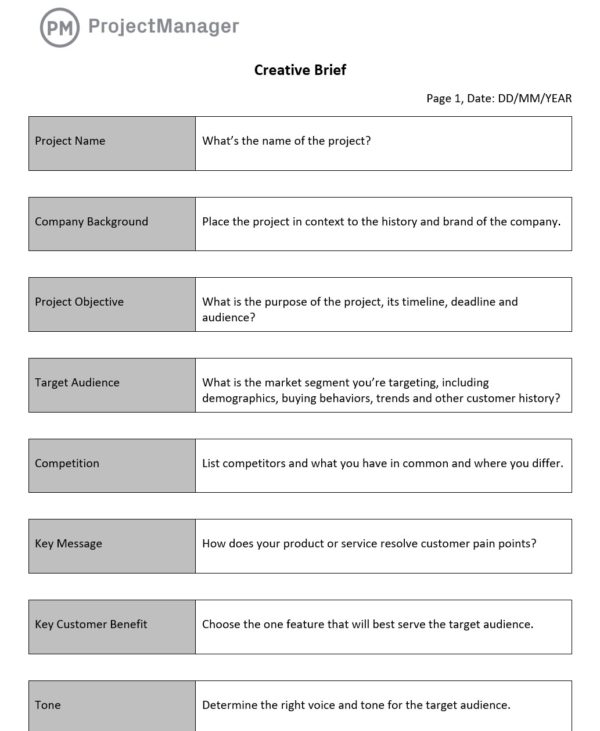
ProjectManager & Creative Briefs
ProjectManager is online project management software that helps you turn your creative brief into a successful project. Our tool has features that can help you plan and monitor progress in real time to keep you on track. There are risk management features that help you identify and resolve issues, task management and resource management tools to boost productivity and much more.
Give Creative Teams the Tools They Want
Managers like to plan on Gantt charts, which is understandable—they offer a lot of control. But creative teams don’t need all that data. That’s why we have multiple project views that share the same real-time data so everyone can work how they want. Teams can knock off their tasks on the list view or, if they prefer a more agile environment, there are kanban boards. Now they can manage their backlog, plan sprints and managers get visibility into their process so they can reallocate resources to keep them free of bottlenecks.

Use Real-Time Dashboards to Track Projects
No matter how good your creative brief is, if you’re not monitoring your progress and performance, things could go awry. You can get a high-level view of the project whenever you want with our real-time dashboard that captures and calculates live data that’s displayed on easy-to-read graphs and charts. Track six project metrics, from costs to workload. Best of all? There’s no setup required as in lightweight tools.
Creative projects require creative solutions. Once you have a creative brief, our software helps you connect teams across departments. They can share files, comment and tag others to bring them into the conversation. Plus, our customizable reports give you more data to make better decisions and can be easily shared to update your stakeholders and manage their expectations.
ProjectManager is online project management software that helps you plan, schedule and track projects in real time. Our flexible software works with waterfall, agile or hybrid methodologies. We connect people anywhere and at any time to help them work better together. Join the teams at NASA, Siemens and Nestle who have used our software to deliver success. Get started with ProjectManager today for free.
The post How to Write a Creative Brief appeared first on ProjectManager.



